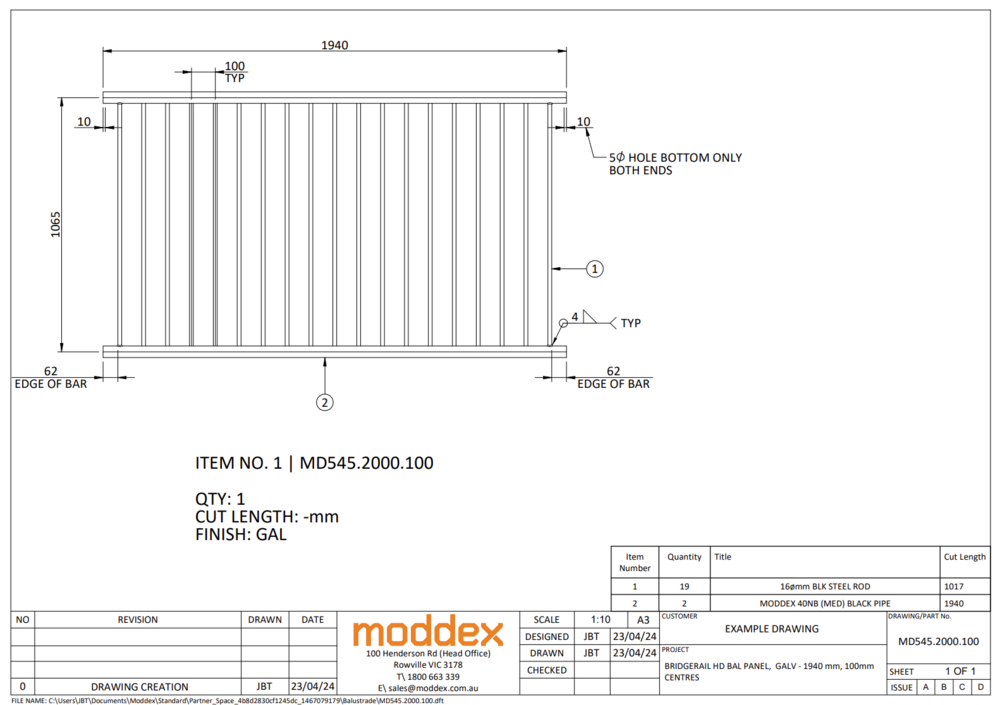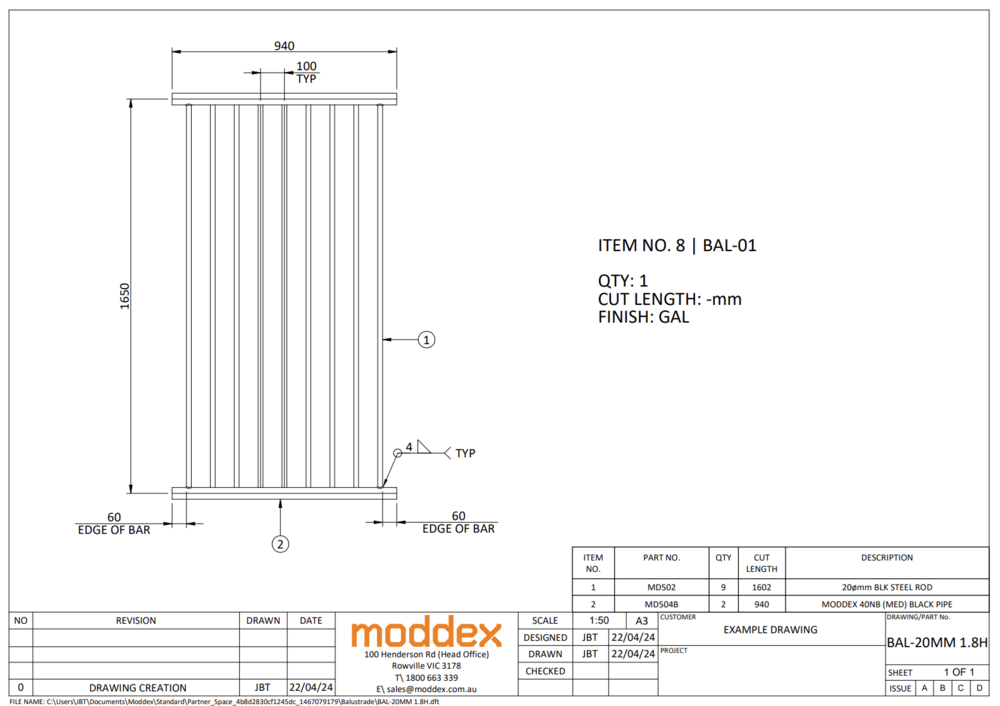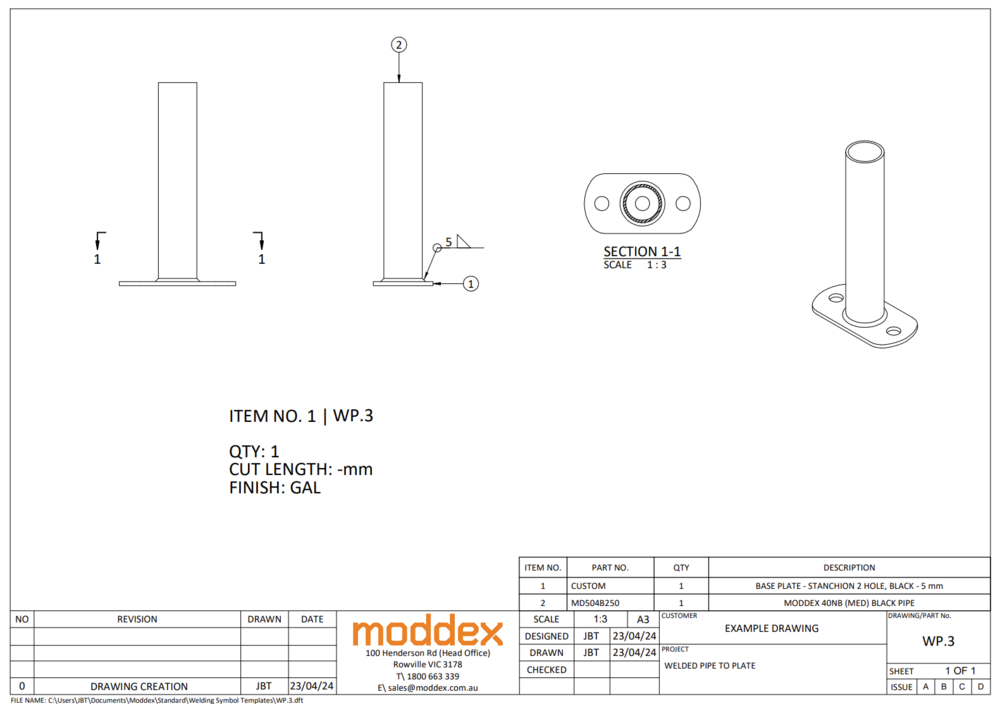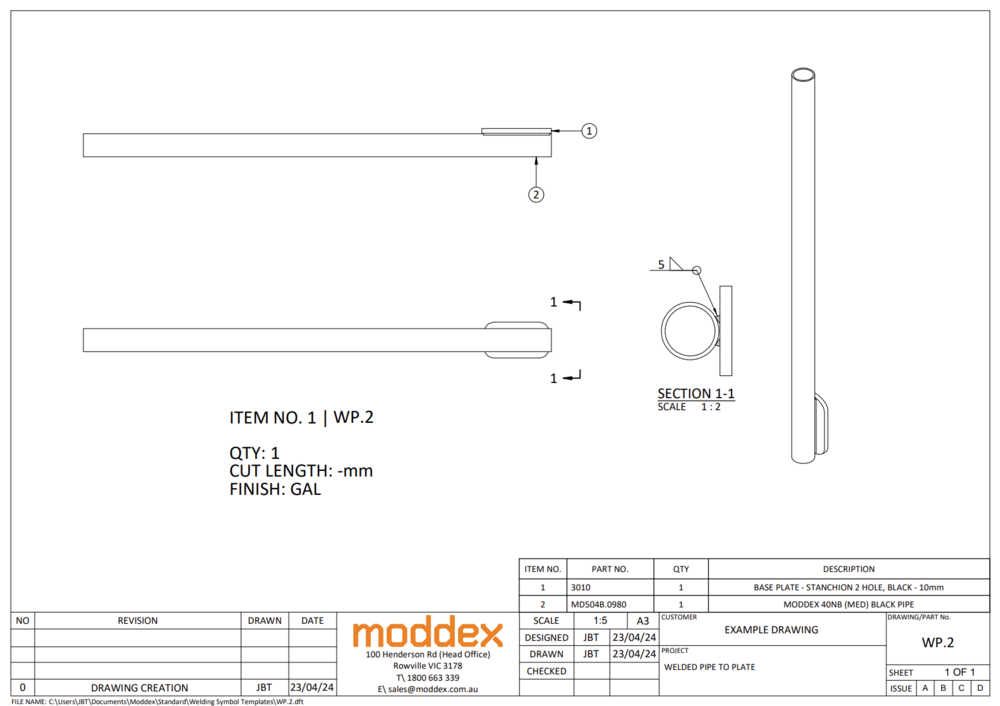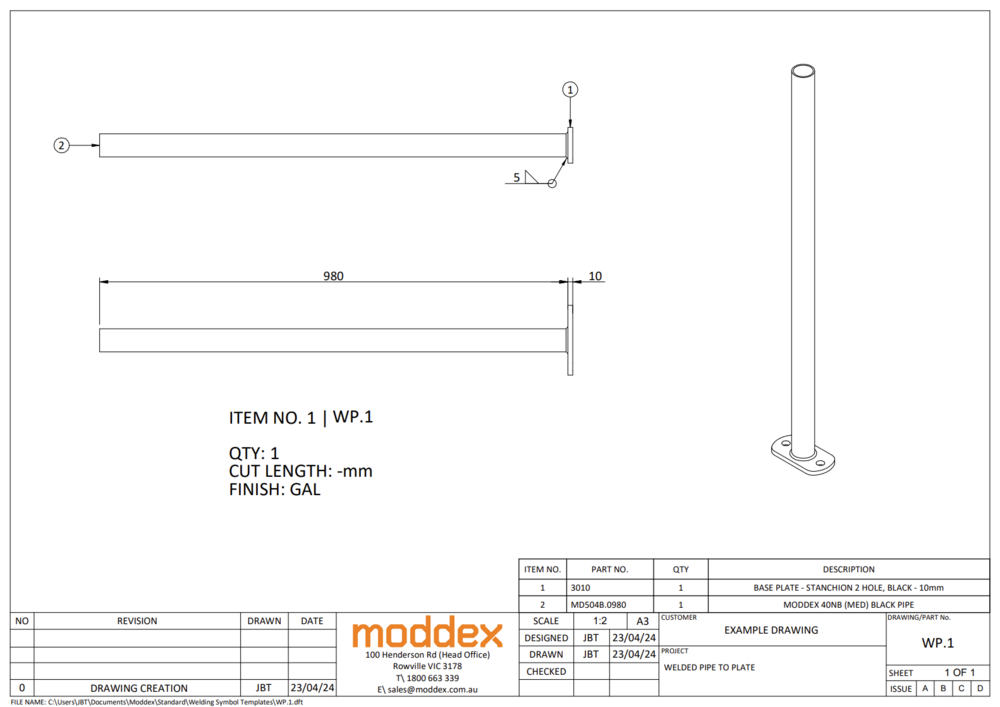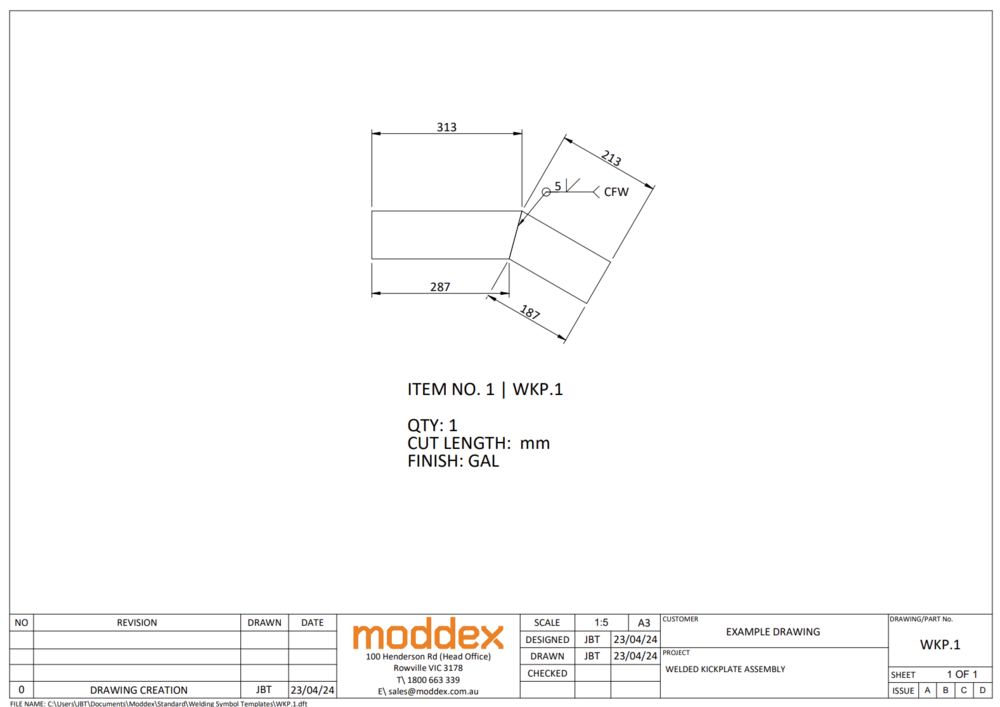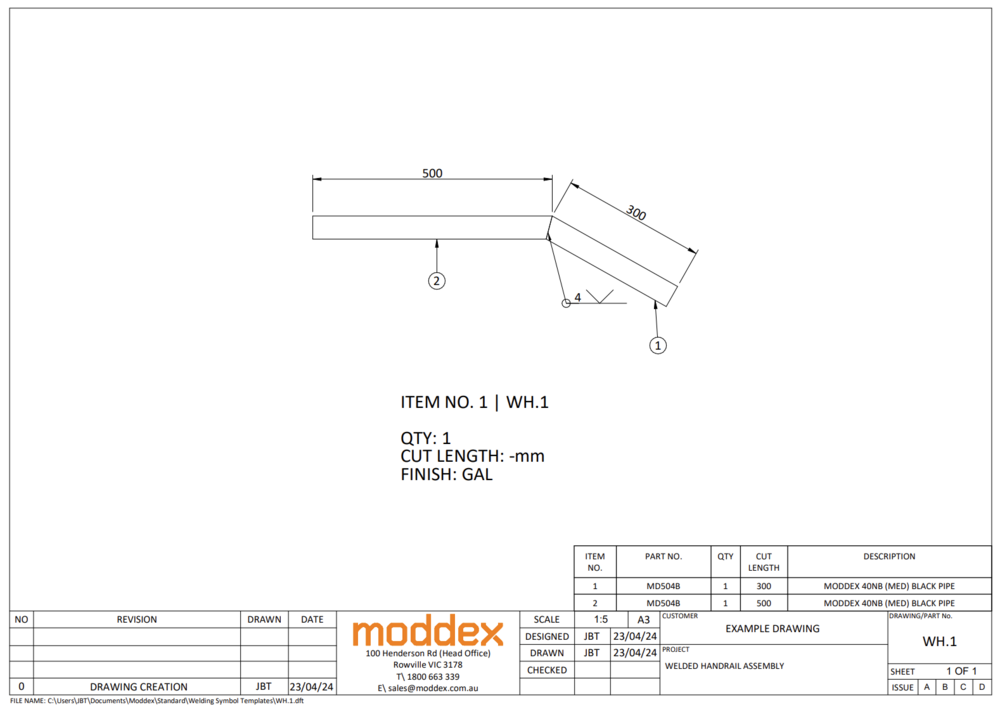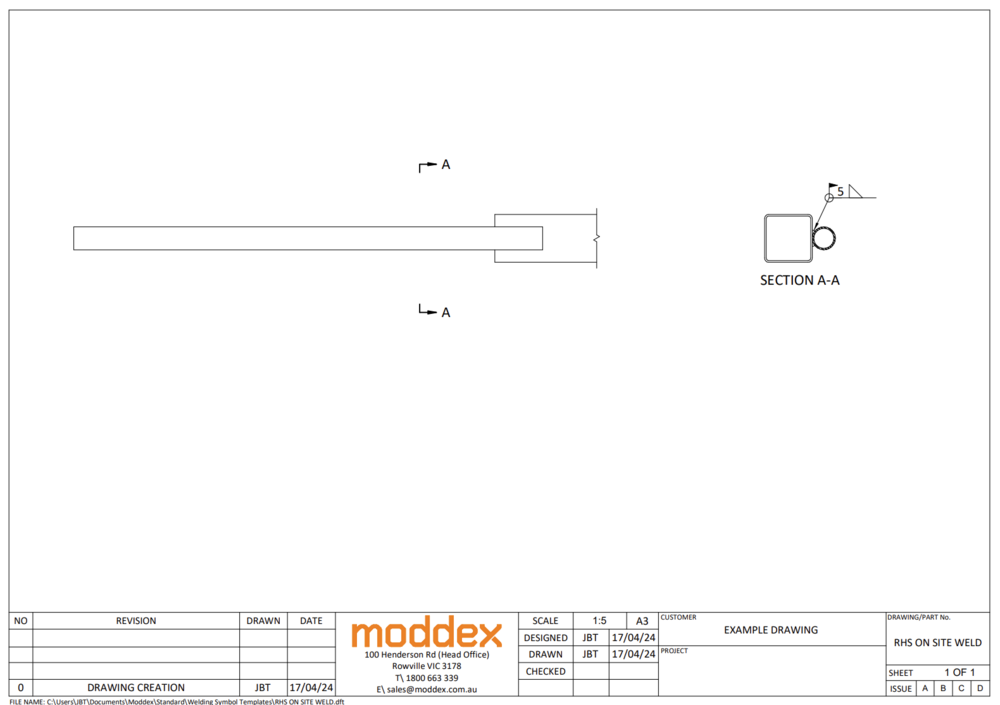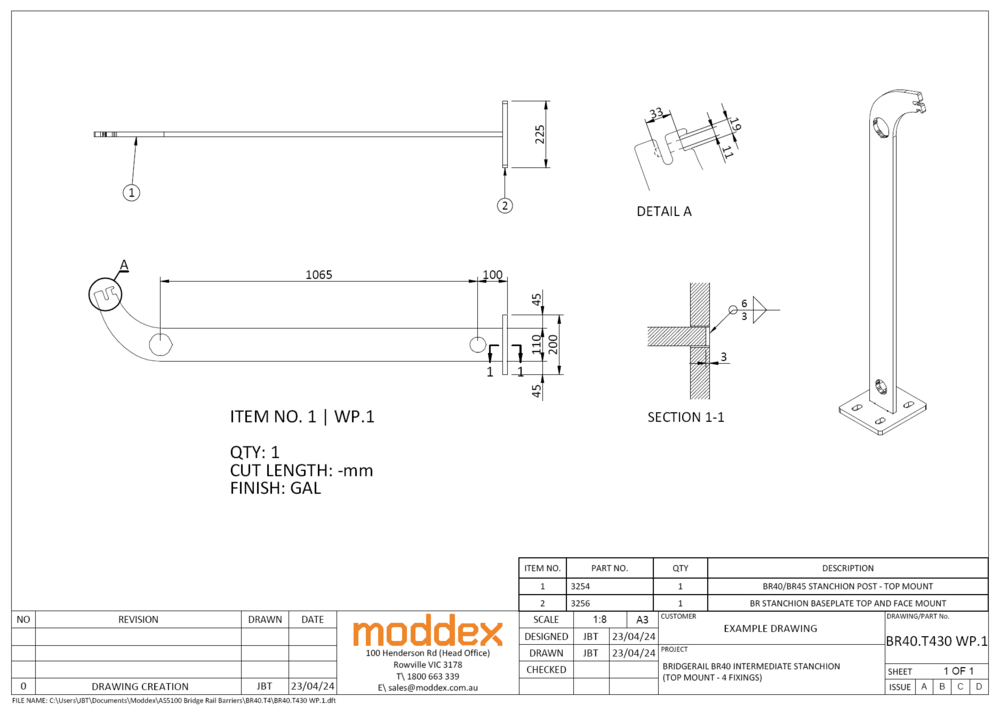Weld Symbols: Difference between revisions
(→Panels) |
|||
| Line 5: | Line 5: | ||
=Panels= | =Panels= | ||
On balustrade panels, regardless of rod size (12, 16, 20mm), we will always use a typical 4mm fillet weld | On balustrade panels, regardless of rod size (12, 16, 20mm), we will always use a typical 4mm fillet weld all-round. Below are example drawings of 12mm, 16mm & 20mm rod panels. | ||
==12mm Rod== | ==12mm Rod== | ||
Revision as of 01:41, 20 May 2024
Contained on this page are examples of weld symbols on different types of fabrication drawings. These drawings range from panels, pipes, custom parts & site instructions. Weld symbols are a necessary part of creating fabrication drawings, as it explains the size & type of weld we require our fabricators to create.
Understanding a Weld Symbol
A weld symbol is an easy representation of the type of weld, its size, and other processing and finishing information. Below is an example weld symbol, showing the structure of the symbol & what each part represents. DRAWING TO BE CREATED
Panels
On balustrade panels, regardless of rod size (12, 16, 20mm), we will always use a typical 4mm fillet weld all-round. Below are example drawings of 12mm, 16mm & 20mm rod panels.
12mm Rod
16mm Rod
20mm Rod
Pipe to Plate
When welding plates to pipe, a 5mm fillet weld-all-round is used. Below are example drawings of different orientation & sizes of plates welding to pipe.
5mm Top
10mm Face
10mm Top
100x6 Kickplate
100x6 kickplate requires a 5mm bevel butt, continuos fillet weld all-around. Below is an example drawing showing this.
Rail to Rail
description...
On Site Weld (ID)
description...
BridgeRail Welded Post
description...


